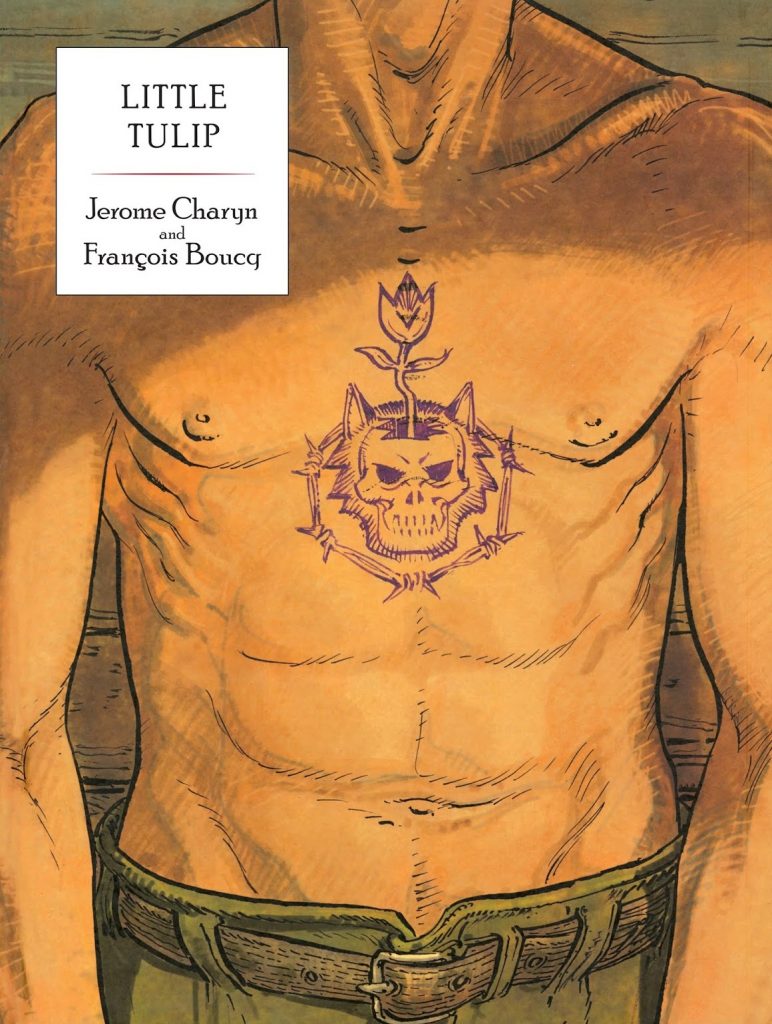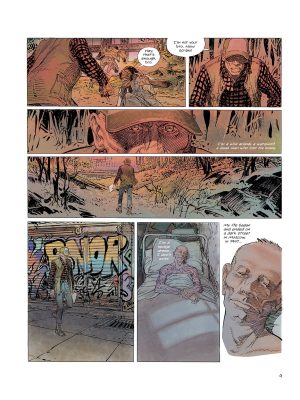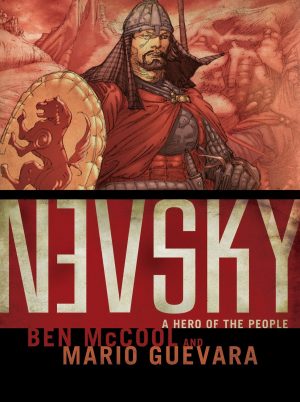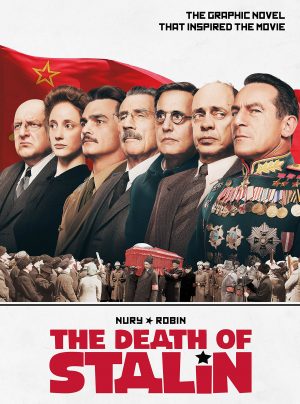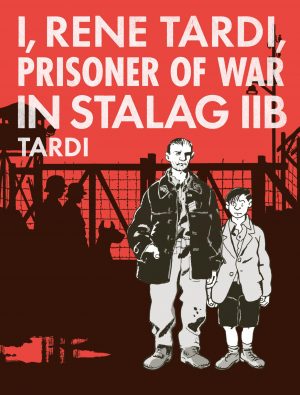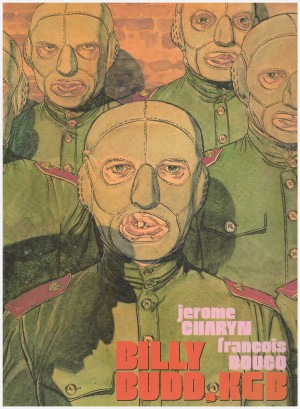Review by Ian Keogh
In 1979 tattooist Paul has a sideline as a forensic artist for the New York police. He inherited artistic talent from his idealistic father, and learned his tattooing trade under the most appalling of circumstances in a Soviet gulag when still a child.
Jerome Charyn’s two-threaded crime drama is extraordinary, although flawed. The story he really wants to tell and which he dives into with relish is that of Paul’s experiences during the immediate post-World War II period in the Soviet Union. He describes a time of hardship, deprivation and casual death via callous military or even more uncaring elements to rival Dostoevsky, and introduces vivid characters, all of them magnificently brought to life by François Boucq. Boucq’s talent overflows. It’s usually possible to identify what most comic artists really enjoy drawing, what they pour their heart and soul into, but that’s not possible with Boucq’s consummate pages. Whether it’s illustrating 1970s New York, an art museum, the savage conditions of a Soviet gulag or the extraordinary people, Boucq approaches it all with relish, the telling of the story being priority. Most remarkably he doesn’t shy away from the tattoos so important to the what’s being told. Most artists would fudge them, but that would destroy the atmosphere of Little Tulip, so Boucq supplies them all from the ornate works of art to the simple designs prisoners adorn themselves with. His Paul is drawn as a fatally haunted man, his past indelibly behind his eyes.
The flaw is the balance. To begin with, the present day narrative of a serial killer in New York seems tacked on, introduced in the opening pages and then only briefly revisited during the continually fascinating Soviet scenes. It is connected, but in a predictable and soulless way, as if Charyn felt the single narrative wasn’t enough, and contrast was required via the 1970s, when actually just setting everything in the Soviet Union could have resulted in a stronger story. Charyn eventually redeems himself with the clever and surprising ending, making up for the obvious way it’s generated. Little Tulip is 90% compelling and beautifully drawn, and the balance notwithstanding well worth your while.
